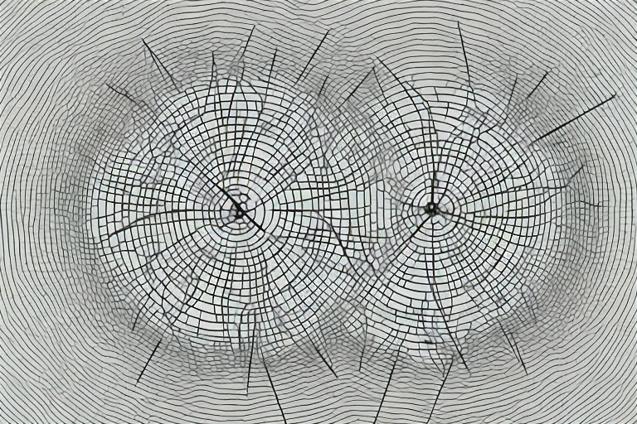
Discover how acupressure can help alleviate seasickness while sailing, allowing you to fully enjoy your time on the open water.
Sailing and Acupressure: How to Use Pressure Points to Ease Nausea
Seasickness is a common ailment that affects many sailors and their families, especially those who are new to the sailing lifestyle. It can be a significant obstacle to enjoying your time at sea, but fortunately, there are many ways to prevent and treat this uncomfortable condition. One such method is acupressure, an ancient Chinese healing technique that involves applying pressure to specific points on the body to alleviate various ailments, including nausea. In this article, we will explore the principles of acupressure, how it can help with seasickness, and how to apply it effectively while sailing.
Understanding Acupressure
Acupressure is based on the same principles as acupuncture, a traditional Chinese medicine practice that involves inserting thin needles into specific points on the body to stimulate the flow of energy, or “qi.” According to traditional Chinese medicine, qi flows through the body along pathways called meridians, and when this flow is disrupted or blocked, it can lead to illness or discomfort. Acupressure works by applying pressure to these same points, or “acupoints,” to stimulate the flow of qi and restore balance to the body.
While acupuncture requires the use of needles and should only be performed by a trained professional, acupressure can be done by anyone with a basic understanding of the technique and the appropriate acupoints. It is a safe, non-invasive, and natural way to alleviate a variety of ailments, including seasickness.
Acupressure and Seasickness
Seasickness, also known as motion sickness, occurs when the brain receives conflicting signals from the inner ear, eyes, and other sensory receptors. This can cause a range of symptoms, including dizziness, nausea, vomiting, and cold sweats. Acupressure can help alleviate these symptoms by stimulating specific acupoints that are associated with the digestive system and the body’s natural ability to maintain balance.
There are several acupoints that have been found to be particularly effective in treating seasickness. These include:
-
P6 (Pericardium 6): Also known as Nei Guan, this point is located on the inner forearm, about three finger-widths below the wrist crease and between the two tendons. It is one of the most well-known and widely used acupoints for treating nausea and vomiting, and has been the subject of numerous scientific studies that have demonstrated its effectiveness.
-
ST36 (Stomach 36): Located on the front of the lower leg, about four finger-widths below the kneecap and one finger-width lateral to the shinbone, this point is known for its ability to strengthen the digestive system and alleviate nausea.
-
CV12 (Conception Vessel 12): This point is located on the midline of the abdomen, halfway between the navel and the base of the sternum. It is often used to treat various digestive issues, including nausea and vomiting.
-
CV17 (Conception Vessel 17): Located on the midline of the chest, halfway between the nipples, this point is said to help calm the mind and alleviate anxiety, which can be a contributing factor to seasickness.
How to Apply Acupressure for Seasickness
To use acupressure to treat seasickness, follow these simple steps:
-
Locate the appropriate acupoint(s): Using the descriptions provided above, locate the acupoint(s) that you wish to stimulate. It may be helpful to practice finding these points on dry land before attempting to do so while sailing.
-
Apply pressure: Using your thumb, index finger, or a specialized acupressure tool, apply firm, steady pressure to the acupoint. The pressure should be strong enough to feel slightly uncomfortable, but not painful. If you are using your fingers, you may find it helpful to support the area with your other hand.
-
Hold and breathe: Maintain pressure on the acupoint for at least 30 seconds to one minute, while taking slow, deep breaths. This can help to enhance the effects of the acupressure and promote relaxation.
-
Release and repeat: After holding the pressure for the appropriate amount of time, slowly release the pressure and allow the area to relax. You can then repeat the process on the same acupoint, or move on to another point if desired.
-
Treat both sides of the body: If you are working with acupoints that are located on both sides of the body (such as P6 or ST36), be sure to treat both sides for maximum effectiveness.
Additional Tips for Using Acupressure at Sea
-
Practice preventative acupressure: If you know that you are prone to seasickness, consider applying acupressure to the relevant acupoints before setting sail, as a preventative measure. This can help to reduce the likelihood of experiencing symptoms once you are on the water.
-
Combine acupressure with other seasickness remedies: Acupressure can be an effective tool for managing seasickness, but it may be even more effective when used in conjunction with other remedies, such as ginger, wristbands, or medication. Experiment with different combinations to find the approach that works best for you.
-
Be patient and persistent: Acupressure may not provide immediate relief for everyone, and it may take some time and practice to find the most effective acupoints and techniques for your individual needs. Be patient and persistent, and remember that the more you practice, the more skilled you will become at using acupressure to manage seasickness.
In conclusion, acupressure can be a valuable tool for sailors and their families who are looking to prevent and treat seasickness naturally and effectively. By learning to locate and stimulate the appropriate acupoints, you can help to alleviate nausea, dizziness, and other symptoms, allowing you to fully enjoy your time at sea. So, the next time you find yourself feeling queasy on the open water, give acupressure a try – you may be surprised at just how effective it can be.